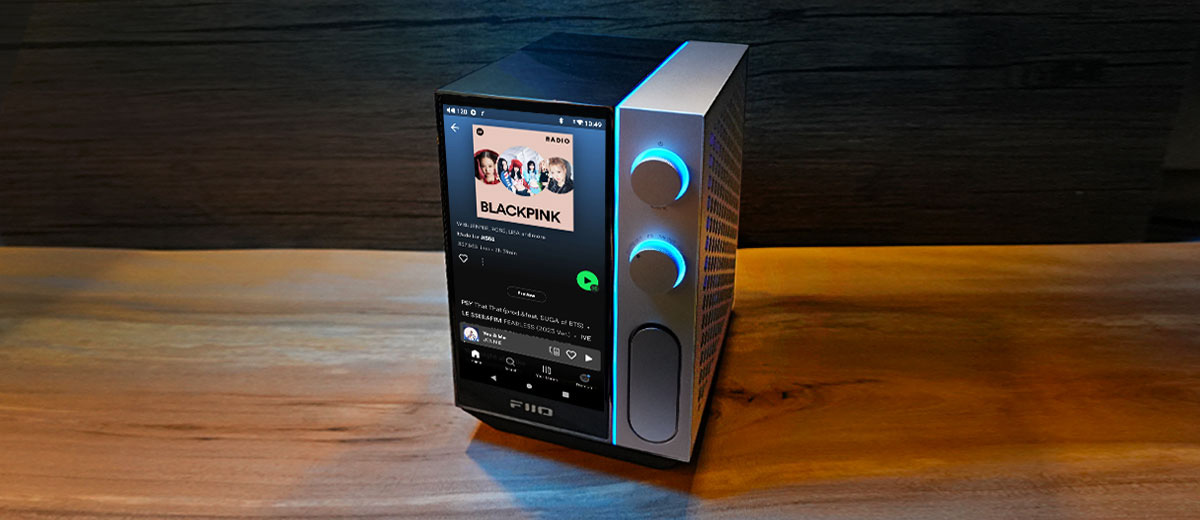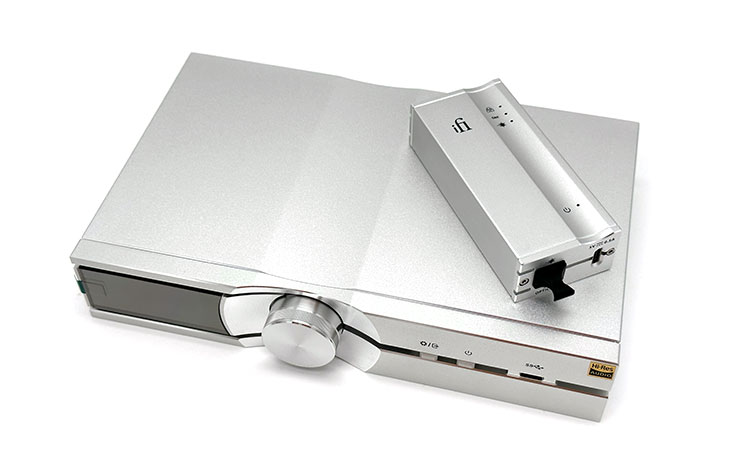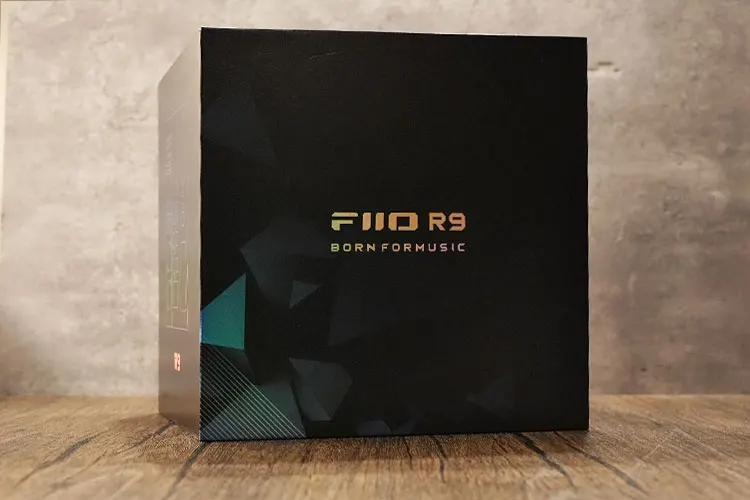Select Comparisons
FiiO R7
Technical
We have mentioned some of the upgrades above but let’s put them all together. Both devices run on the Qualcomm 660 SoC and have 4+64GB RAM + ROM, though the R9 has a discreet Bluetooth chipset supporting aptX adaptive.
It also has an independent XMOS 16-core XU316 implementation along the upgraded dual DAC ESS ES9038PRO with 8 channels, compared to the 2 channels dual ES9068AS on the R7.
Although both devices are marketed to be using the THX AAA 788+ amping module, the R9 has doubled the channels, and the max output is more than double that of the R7.
The R9 also supports HDMI IN and HDMI ARC, which allows it to connect to more home gears. You will also notice a new GND switcher on the R9 and it supports DC 15V input instead of 12V on the R7.
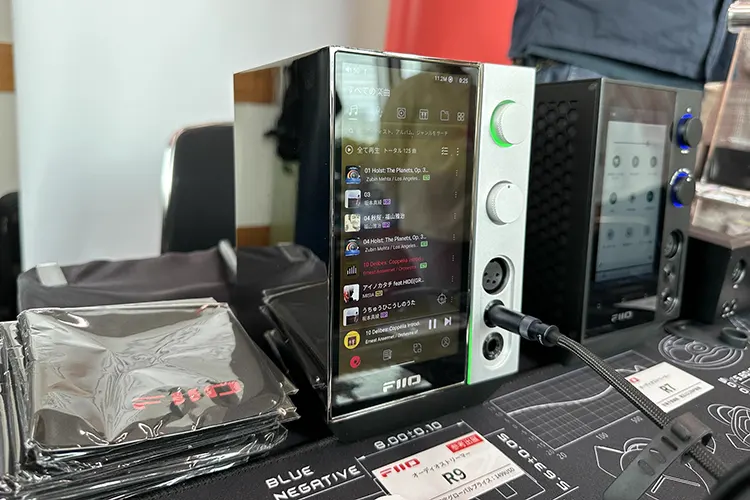
Design
While both designs share the same backbone, it is easy to notice the R9’s more premium finish with the additional RGB lighting and the reflective metal bicolor design.
The R7 may still look geeky on the desktop but the R9 is an artistic piece to attract eyeballs. With a larger screen, it is easier to navigate and packs in more pixel density, letting graphical content come to life.
Performance
The tuning direction on the R7 and R9 has some good resemblance probably due to the THX AAA 788+ modules, but when it comes to quality and power, the R9 has a clear edge over the R7.
Not only the output power, but the density within notes, separation, and extension are enhanced on the R9. The sound on the R9 is also quite a bit more organic, and the R7 is not as linear and evenly tuned, though you may find it brighter with better-perceived clarity in the treble with the stock tuning.
On a USB connection, the R9 enhancement is prominent, with better treble extension and control which contributes to a more brilliantly opened and transparent tonality that is without sharpness and free from sibilance.
Distortion control on the other hand is also superior on the R9 as you can pump up to a high volume and it still sounds very dense and fast in transient response.
The performance with speakers is also enhanced. Through the Genelec 8020a, the R9 sounds more dynamic and can withstand peakier voices and stronger transient changes without flattening out, overall sounding more organic and immersive.
Shanling EM7
Technical
The Shanling EM7 uses also ES9038 PRO, whereas the FiiO R9 uses 2 pieces of the ES9038 PRO for decoding.
The full-balanced amping path of the EM7 uses the classic OP+BUF structure, with four OPA2211. It is capable of outputting as much as 7W @32ohm and 10W @300ohm, technically even more powerful than the R9 when driving high-impedance headphones.
The EM7 also uses the faster Snapdragon 665 MCU but practically the experience is similar to the Snapdragon 660 on the R9.
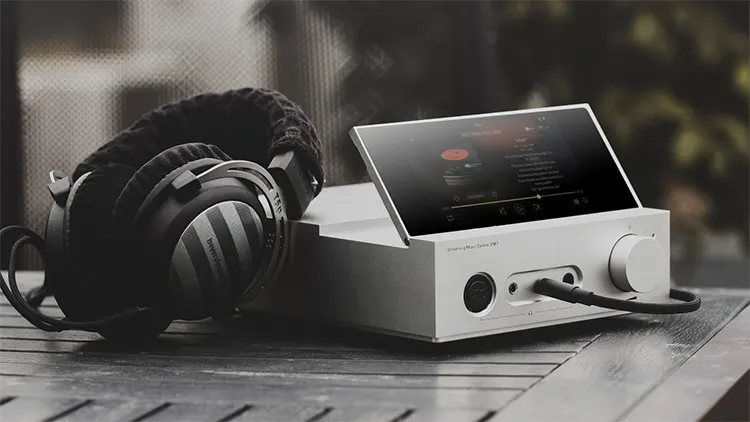
Design
The EM7 takes a more traditional approach and comes with a 5.8” screen which I don’t think is a good idea, as most of the list and apps have a vertical layout.
The more elaborate construction of the R9 housing and its luxuriant finishing is a clear win. There are a lot more nuanced details in the design, so also the overall build quality and the level of customization on the UI.
Performance
Testing with sensitive IEMs on balanced output, both devices can sound dead quiet on high gain. The EM7 sounds smoother in tone with richer vocal body, more elaborated midrange with stronger texture in the vocal range.
The R9 is less colored and more elevated in the upper mid-treble range, allowing lighter voices to penetrate with more power and stressing on the air in the treble, and it outlines the midrange cleaner such that the vocal presence is not as strong as on the EM7.
I find the R9 more textured in tone although it is slightly darker in tuning as the bass and upper mids are prominent. There is also a marginally stronger sense of control on the R9, as its treble sounds even more distortion-free.
With IEMs of higher impedance, the two come closer in performance and the EM7 holds together a denser vocal image with better intimacy between instruments, as well as musicality.
The R9 sounds stronger in separation and smoother in the midrange which allows more details to be extracted from instruments and is freer from coloration.
iFi Audio NEO Stream
Technical
The Neo Stream uses a four-channel Burr-Brown True Native DAC supporting up to 768kHz PCM and DSD512 native playback. This is on par with the R9’s USB DAC’s 768kHz/32bit and DSD512 capability enabled by the 8-channel ES9038PRO DAC. The NEO Stream balanced 4.4mm output can also output up to 4V RMS.
The Neo Stream, as a dedicated streamer, supports DLNA/UPnP, Roon Ready, Tidal Connect, Spotify Connect, Apple AirPlay, NAA, and AIO interface.
Most of which is supported by the R9 as well while NAA is a unique feature on the Neo Stream that allows HQPlayer users to transmit the file via network.
The AIO interface allows playback control via web browsers and for the R9 since it has a screen and app control function, you can control it directly or over another phone or portable device.
In practice, the Neo Stream supports mainstream applications though FiiO provides extended application support as it can install other APKs from app markets. There is also native support for various streaming apps such as Qobuz, Deezer, Apple Music, Amazon Music, JOOX, and more.
Design
The compact Neo Stream offers an interesting feature with its optical LAN interface, achieved through the OptiBox receiver connected to the main decoding unit via an SC optical cable.
The Neo Stream’s I/O ports are positioned at the back, catering to the preferences of HiFi users. Though it lacks an XLR output for headphones, it does provide a 4.4mm balanced output.
Notably, the Neo Stream offers professional output choices such as AES/EBU and I2S (over HDMI). The USB jacks are equipped with ANC II active noise cancellation technology to reduce interference, and the SPDIF port features iPurifier technology.
In contrast, FiiO provides a different set of I/O options for integration into various desktop or HiFi systems. Notably, it features front-placed earphone jacks and supports Optical, Coaxial, and HDMI inputs.
the R9 also includes XLR balanced output for direct connection to active speakers, and it offers two sets of RCA outputs, allowing connection to multiple speaker sets simultaneously.
The Neo Stream is designed as a professional streamer with a neat and space-saving design, considering its design if you are using it with earphones or headphones, it may be better to hook it up with an amplifier.
However, it does have a limitation in terms of lacking Bluetooth support, which can restrict its usage scenarios. The R9 offers a more comprehensive range of connectivity options, making it a versatile choice with broader compatibility, and is much easier to use with its larger screen and Android interface.
Performance
The two devices are very different in practice as the NEO Stream targets HiFi users with the simple purpose of streaming from their PC / Airplay sources to their Decoders or amplifiers.
The R9 is more versatile and targets a wider audience and is much easier to control from phones or to stream from Bluetooth sources.
During my testing, I had the opportunity to connect the 4.4mm output of the NEO Stream to the xDuoo XD05 Pro. In comparison to the R9, the NEO Stream’s output sounded more organic and full-bodied on stock filter settings.
The presentation has better musicality on the NEO Stream’s analogue 4.4mm output though the R9 exhibited a stronger sense of digital alteration, and it offered greater texture and resolution.
Switching between Roon and Airplay sources I can confirm the same result, where the NEO Stream colors the vocal with more texture and fullness, and the treble is more rounded and natural.
I had the chance to test the coaxial output on the NEO Streamer as well as connected to the new FiiO Q15 for DSD64 playback, and I found the output quality marginally better on the NEO Streamer as it sounds more vivid and textured. I could best describe it as a slightly analog or euphonic coloration.
The R9 on the other hand, has a more linear, extended presentation that presents the midrange frequencies swifter and comes quite close in performance.
In terms of decoding quality, I found that the NEO Streamer has a slight advantage over the R9 based on the functions and connections I tested. However, this difference may not be very pronounced, and the R9 outshines the NEO Streamer in terms of convenience and connectivity.
I am eager to compare the R9 to the new iFi Audio NEO iDSD 2, which could be a closer competitor to the R9, and provide further insights into their performance.
Our Verdict
The FiiO R9 is an incredibly versatile and practical all-in-one streamer, DAC, and headphone amplifier that offers possibly the most comprehensive set of I/O options, well customized to seamlessly integrate into desktop or speaker setup.
The design exudes a premium look, setting it apart from the competition while the portrait Android layout is much more practical to run different apps. The output power is very impressive given its size, and the output quality is decent.
If you have limited desk space and need a powerful device that can fulfill your streaming needs while connecting to your speakers, PC, and headphones, there are very few similar devices that can outperform the R9.
FiiO R9 Technical Specifications
- Main Controller: Qualcomm Snapdragon 660
- OS: Customized Android 10 (with plans to upgrade to Android 12 in Q1 2024)
- DAC: ES9038PRO*2
- Headphone amp: Quad THX AAA 788+
- Bluetooth chip: QCC5125
- Bluetooth version: 5.1
- Bluetooth codec support: LDAC/aptX Adaptive/aptX LL/aptX HD/aptX/AAC/SBC
- USB: XMOS XU316
- USB DAC: 768kHz/32bit, DSD512
- USB type: Type-C USB3.0, USB-A
- Display: 6-inch bezel-less HD screen
- Output power 1: L+R≥7300mW+7000mW (32Ω, BAL, THD+N<1%, Ultra high gain mode)
- Output power 2: L+R≥1000mW+1000mW (300Ω, BAL, THD+N<1%, Ultra high gain mode)
- Frequency response: 20Hz~80kHz (0.9dB)
- Signal-to-noise ratio: ≥126dB (A-weighted)
- Noise floor: LO≤1.4μV (A-weighted); PO≤4μV (A-weighted); BAL LO≤1.9μV (A-weighted); BAL≤7μV (A-weighted)
- Output impedance: <6Ω (32Ω load)
- THD+N≤0002% (1kHz/-1.8dB@32Ω)
- RAM: 4GB
- Internal storage: 64GB
- Memory card support: Single microSD card slot, supports up to 2TB
- Dimensions:
- About 115x127x160mm (excluding base)
- About 115x127x170mm (including base)
- About 115x127x182.5mm (including 7° slanted base)
- Weight: About 2271g

